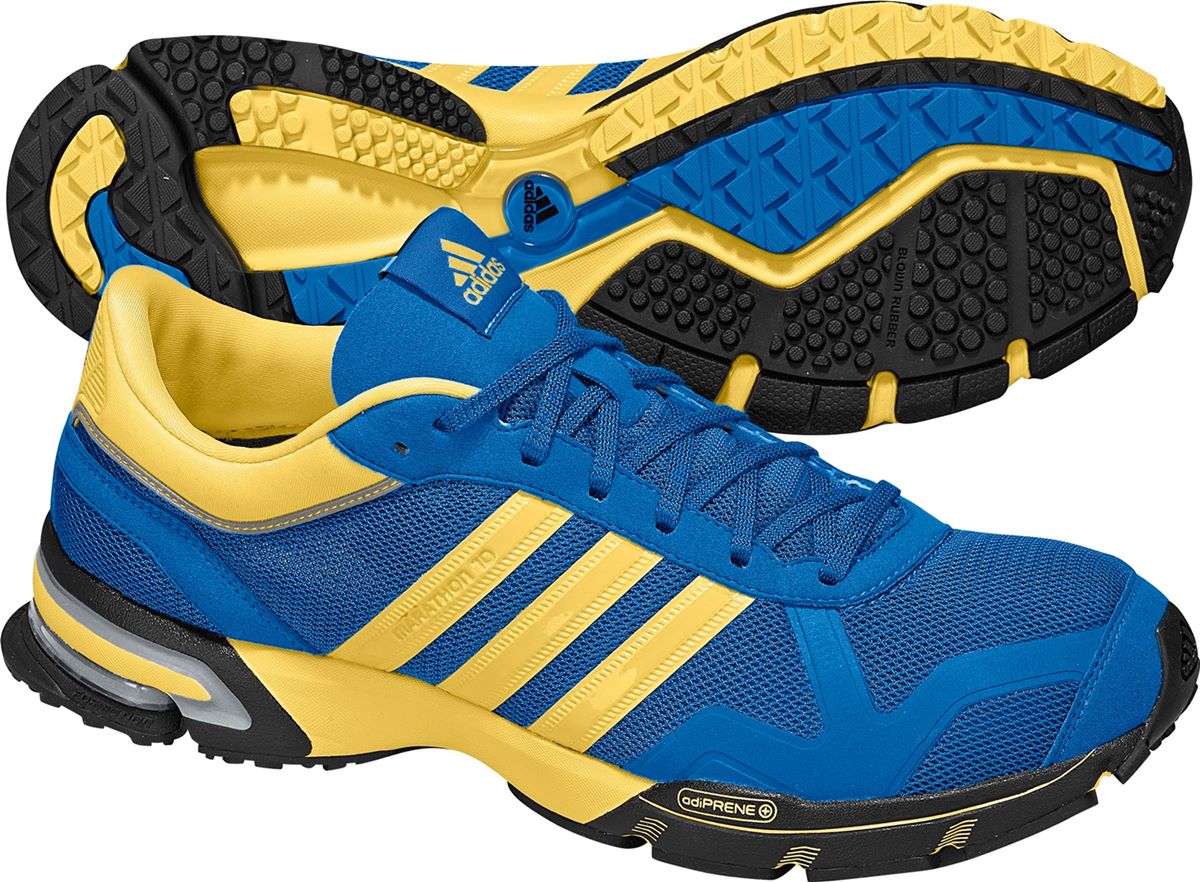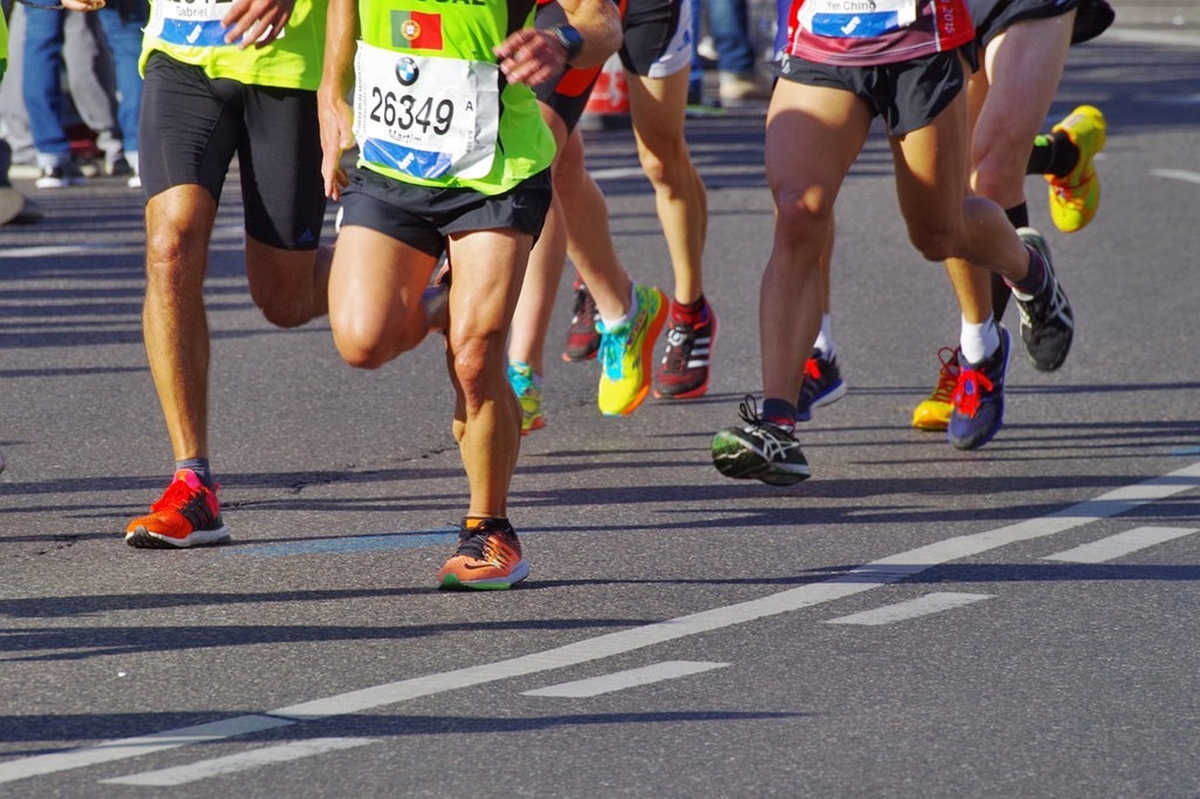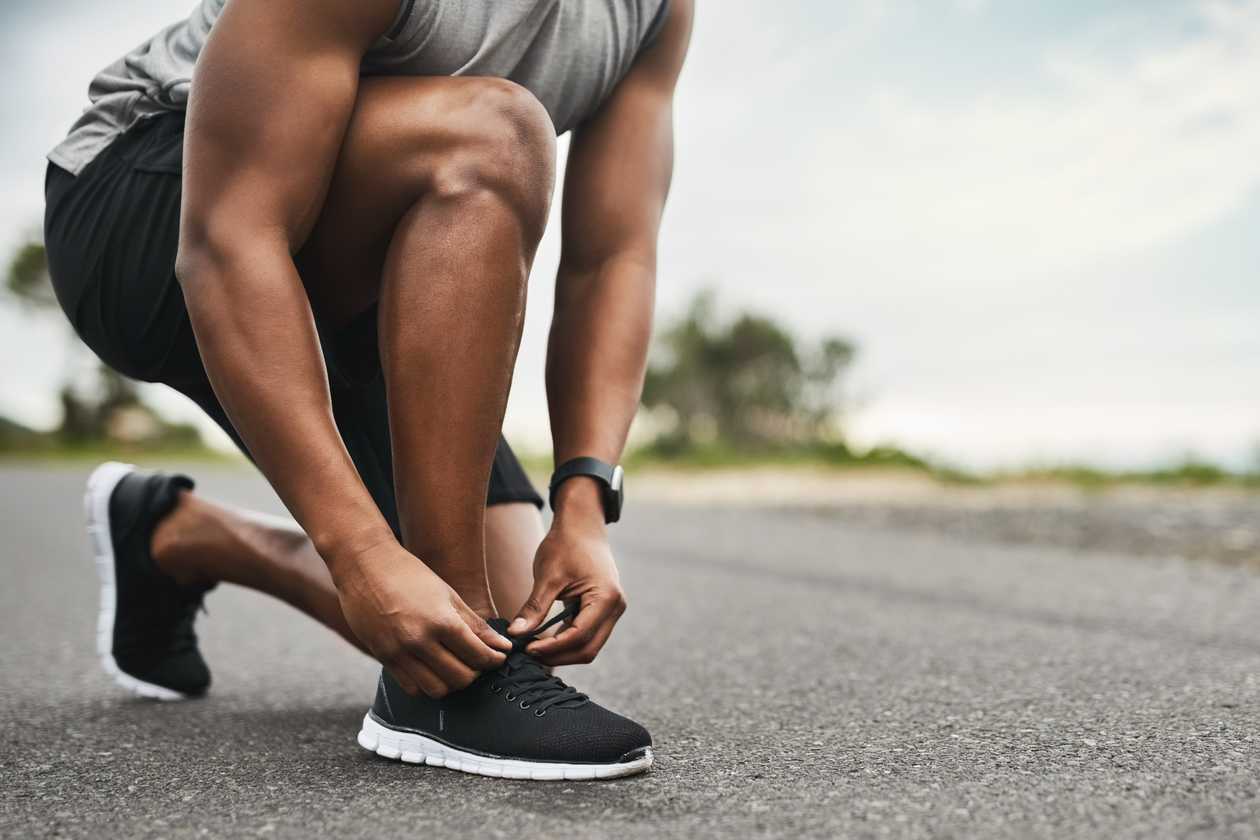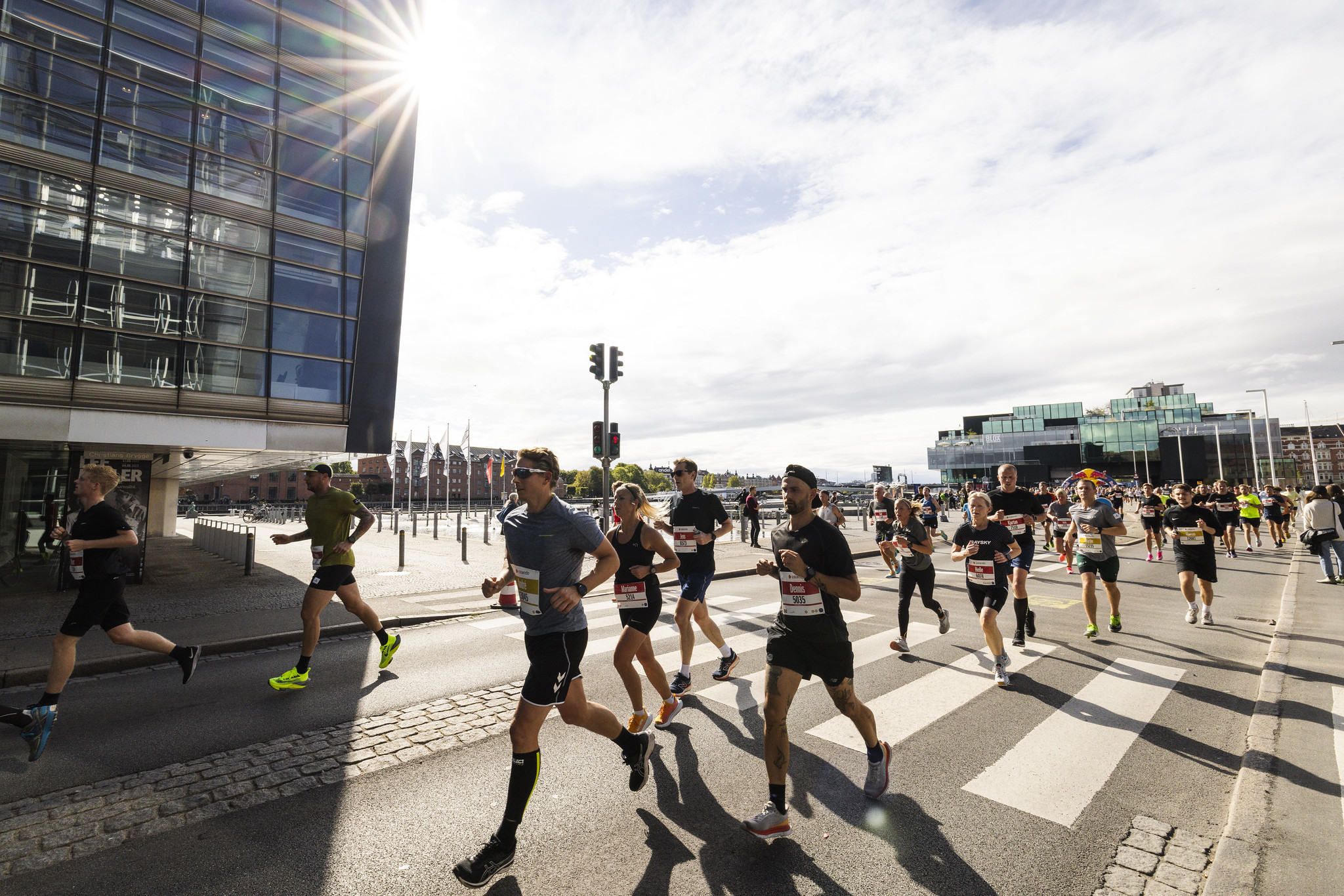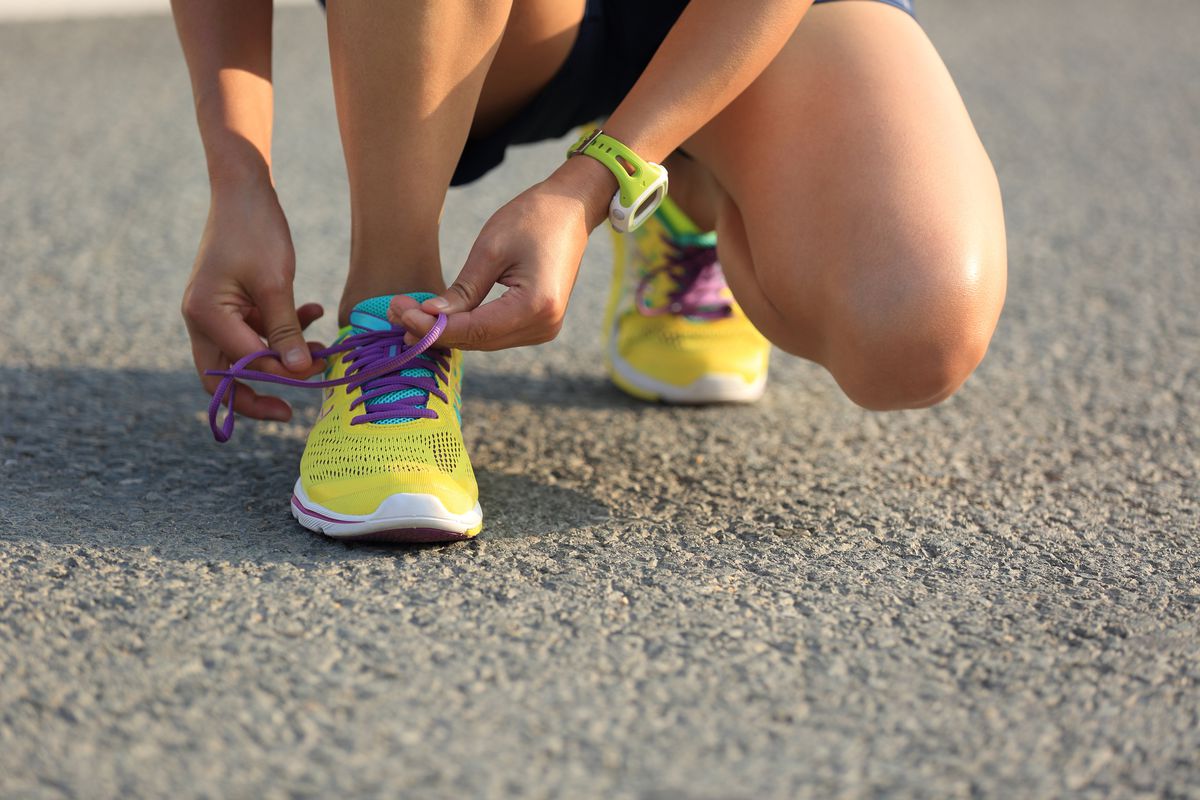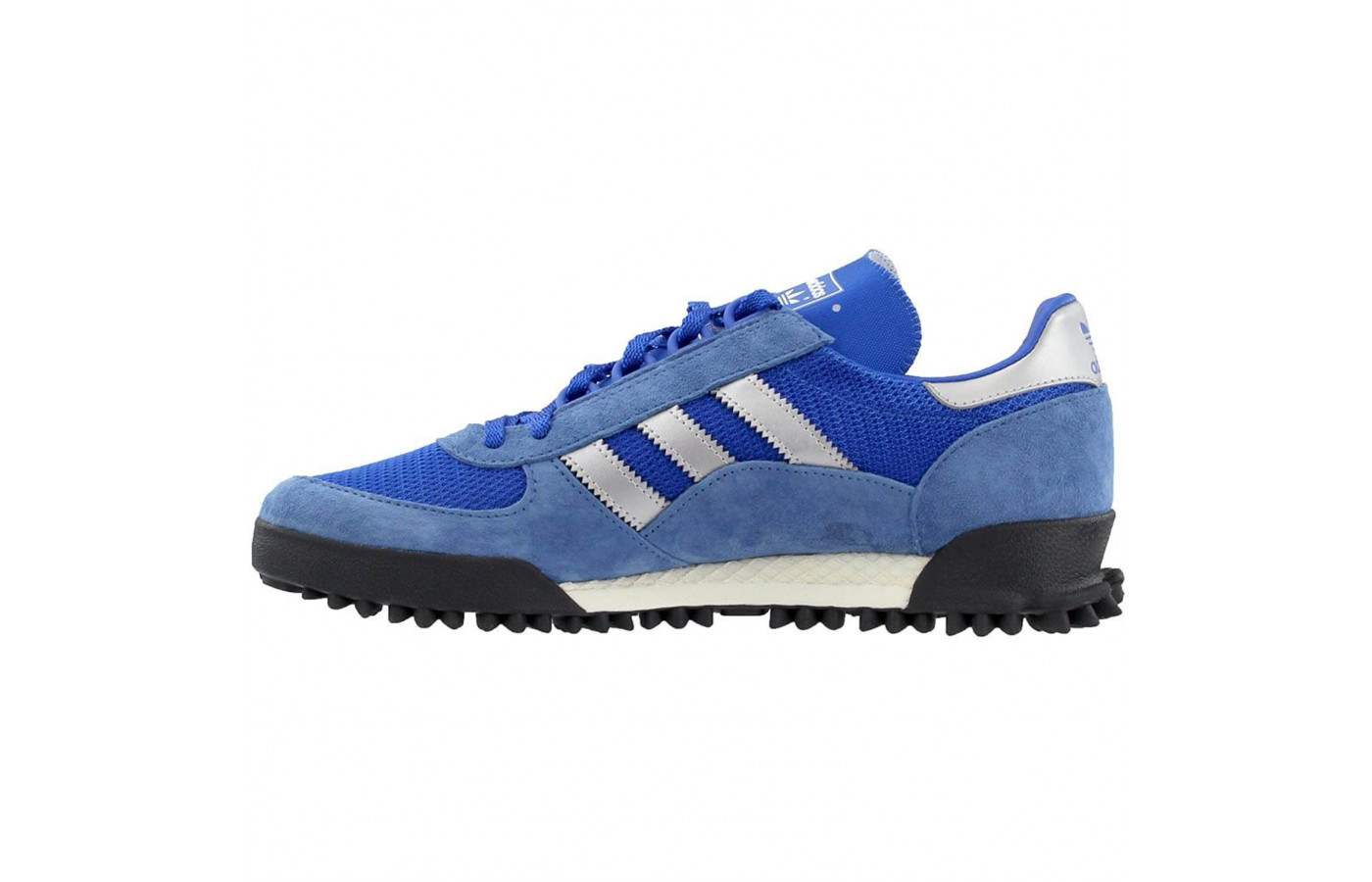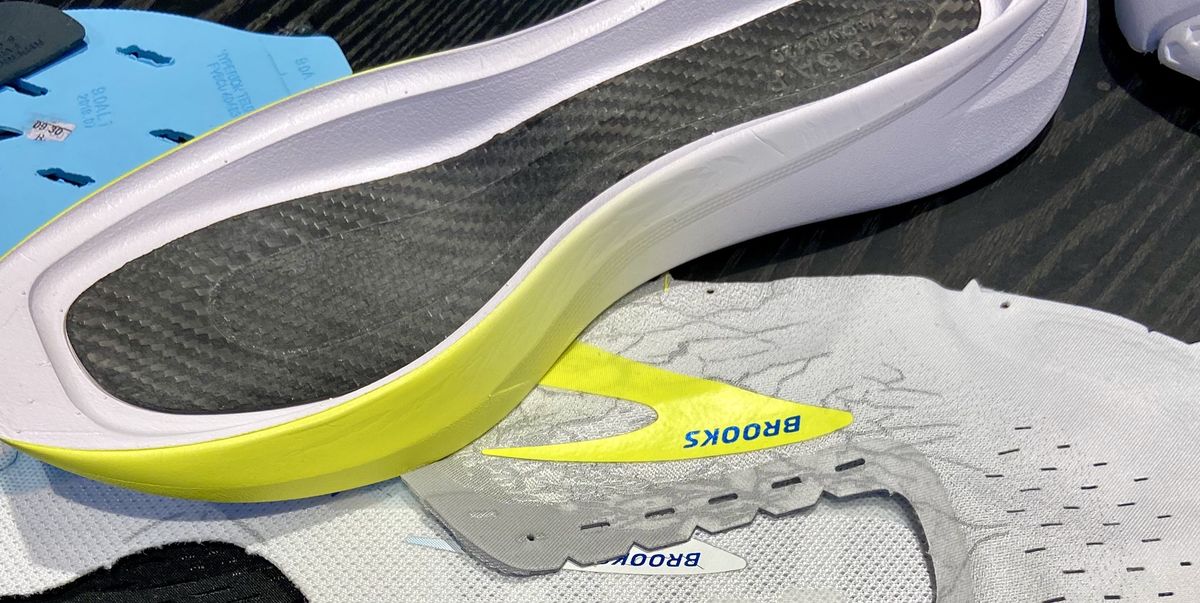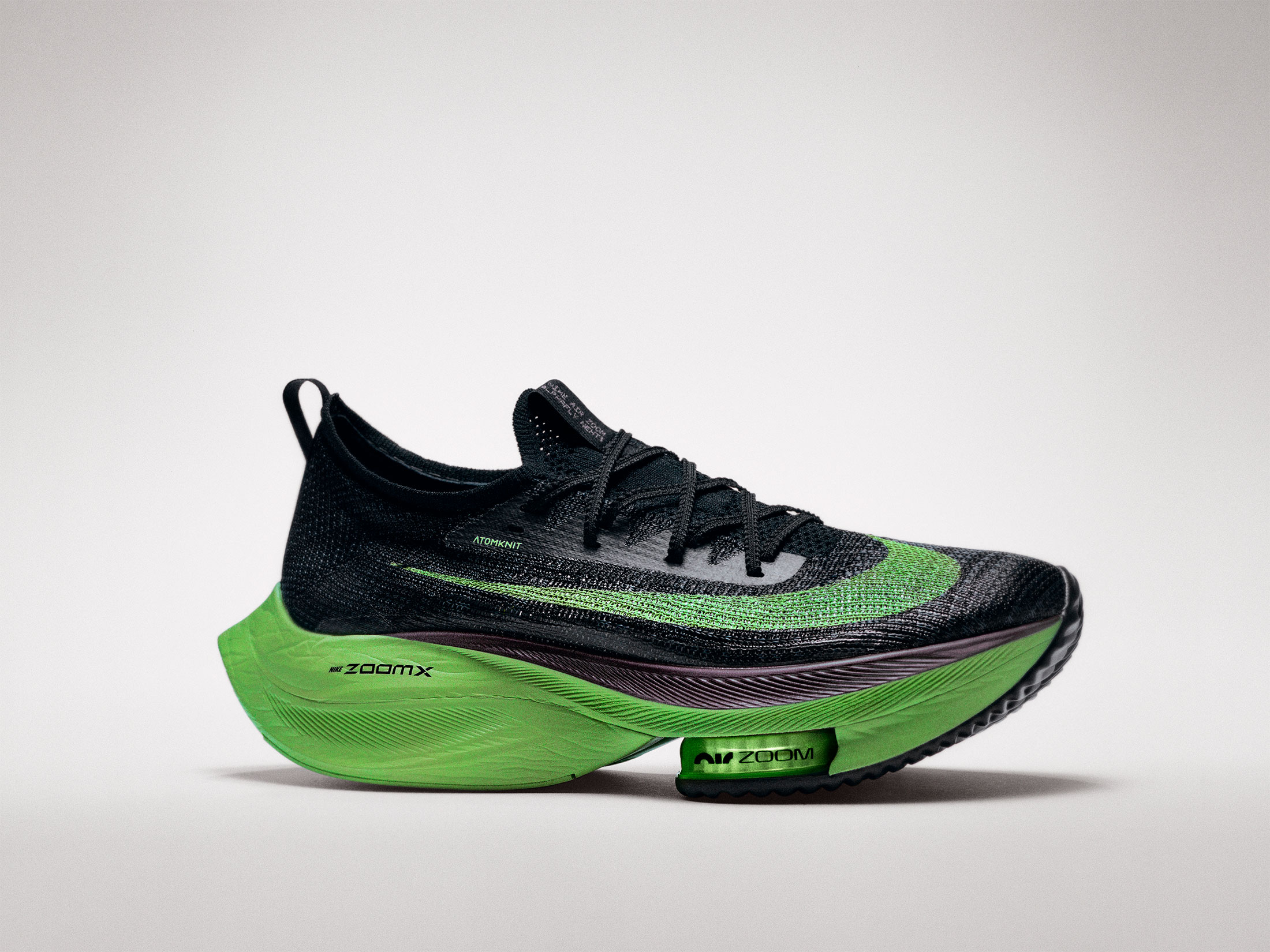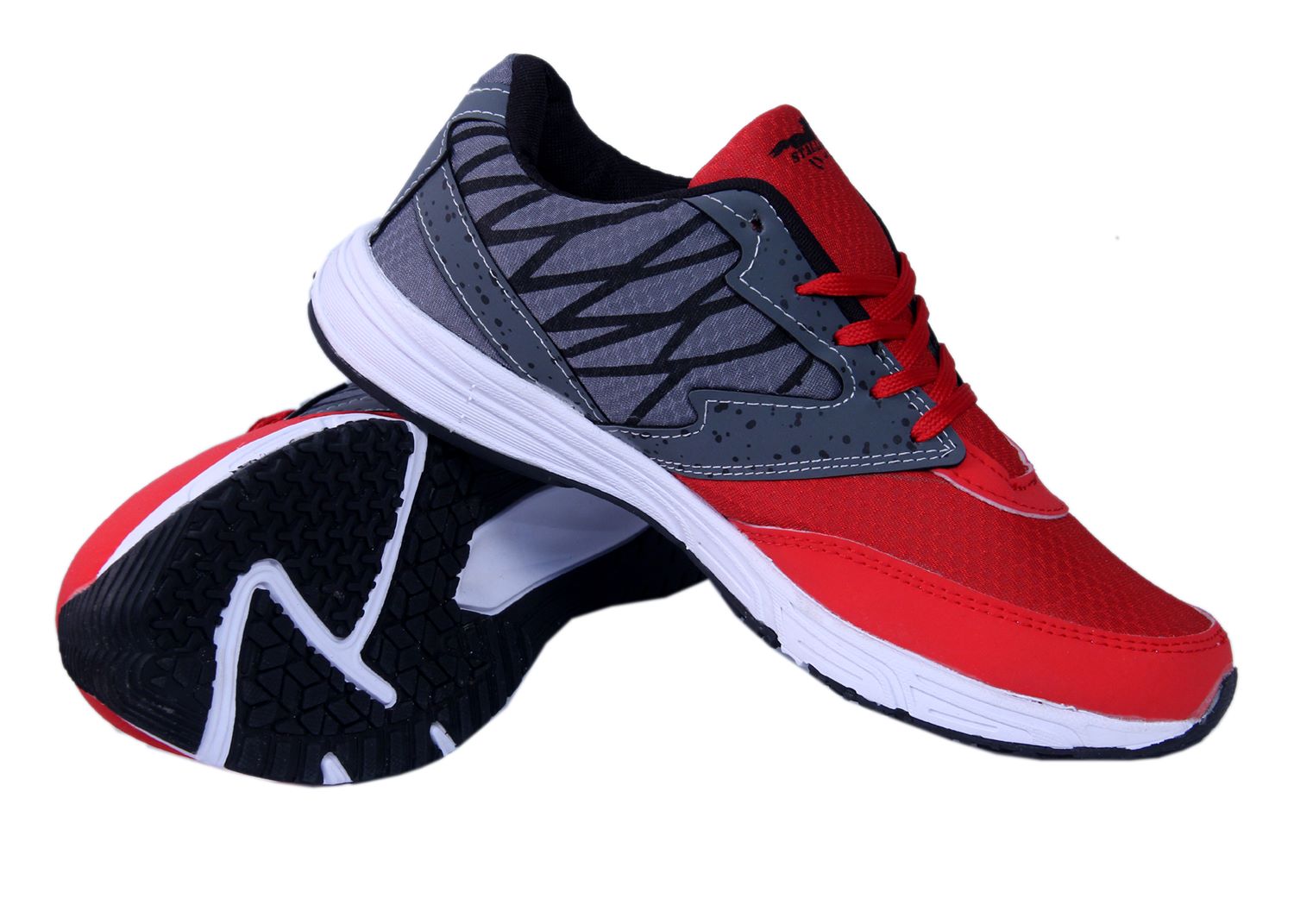Home>Misc>Featured>What Are The Best Shoes For Running A Marathon


Featured
What Are The Best Shoes For Running A Marathon
Modified: January 22, 2024
Discover the top featured running shoes for marathon runners. Find the best shoes to support your marathon training and achieve your running goals.
Introduction
Running a marathon is no small feat. It requires months of training, mental perseverance, and, of course, the right pair of shoes. Choosing the best shoes for running a marathon is essential for maximizing performance, preventing injuries, and ensuring a comfortable and enjoyable running experience.
When it comes to marathon running shoes, there are several factors to consider. From cushioning and support to stability and pronation control, each aspect can greatly impact your running efficiency and overall comfort. Additionally, factors such as breathability, durability, weight, and flexibility play a crucial role in determining the ideal pair of shoes for marathon training and racing.
In this article, we will explore the key factors to consider when choosing marathon running shoes and highlight some of the top shoe brands known for their quality and performance. Whether you’re a neutral runner, an overpronator, or an underpronator, we’ve got you covered.
Factors to Consider when Choosing Marathon Running Shoes
Choosing the right marathon running shoes can make all the difference in your training and race day performance. Here are some crucial factors to consider before making your selection:
- Cushioning and Support: Marathon running is a high-impact activity that puts a significant amount of stress on your feet and joints. Look for shoes with sufficient cushioning to absorb the shock and provide adequate support throughout your training and on race day.
- Stability and Pronation Control: Pronation refers to the natural inward rolling motion of the foot while running. Understanding your pronation type (neutral, overpronation, or underpronation) can help you choose a shoe that provides the right amount of stability and pronation control to align your gait and prevent injuries.
- Breathability and Comfort: Running long distances can generate heat and sweat, leading to discomfort and potential foot issues. Opt for shoes with breathable uppers that allow proper airflow and keep your feet cool and dry, reducing the risk of blisters and irritation.
- Durability and Longevity: Marathon training involves putting in many miles, so it’s crucial to choose shoes that can withstand the demanding nature of the sport. Look for durable materials and solid construction that will hold up well over time.
- Weight and Flexibility: The weight and flexibility of your shoes can impact your running efficiency. Lightweight shoes can help you maintain a steady pace, while flexibility allows for a natural range of motion, reducing the risk of strain or discomfort.
By carefully considering these factors and understanding your specific needs as a runner, you can make an informed decision when selecting your marathon running shoes. Remember, everyone’s feet are unique, so what works for someone else may not work for you. It’s essential to try on different shoes and take them for a test run to ensure the perfect fit and feel.
Cushioning and Support
When it comes to marathon running, the right cushioning and support are essential for a comfortable and injury-free experience. The cushioning in your shoes helps to absorb the shock of each step, reducing the impact felt by your feet and joints. It provides a layer of protection and ensures a smooth ride throughout your run.
The level of cushioning you need will depend on factors such as your running style, body weight, and personal preference. Some runners prefer a plush cushioning that provides a soft and pillowy feel, while others prefer a firmer cushioning for a more responsive and spring-like ride.
Support is another critical factor to consider when evaluating the cushioning in running shoes. It refers to how well the shoe stabilizes your foot and provides a secure fit. Adequate support helps to prevent overpronation (excessive inward rolling of the foot) or underpronation (insufficient inward rolling of the foot), which can lead to various injuries.
Several brands incorporate advanced cushioning technologies into their shoes. For example, Nike utilizes their renowned Zoom Air cushioning system, which offers a responsive and bouncy feel. Other brands like Brooks incorporate their DNA Loft cushioning, which provides a balance between softness and durability.
When selecting marathon running shoes, it’s essential to consider your individual needs. If you have a pronation issue, look for shoes with stability features such as a medial post or a denser midsole foam on the inside of the shoe. These features will help to correct your gait and prevent injuries.
Ultimately, finding the right balance between cushioning and support is crucial. You want a shoe that offers enough cushioning to protect your feet and joints during the long miles of a marathon, while providing adequate support to keep you stable and aligned. By considering your running style, pronation type, and personal preferences, you can choose a shoe that will provide the perfect cushioning and support for your marathon training and racing needs.
Stability and Pronation Control
Stability and pronation control are crucial factors to consider when choosing marathon running shoes. Pronation refers to the natural inward rolling motion of the foot during each step. It is a necessary movement that helps with shock absorption and propulsion. However, excessive pronation or insufficient pronation can lead to imbalances and potential injuries.
If you overpronate, your feet roll inward excessively, putting stress on your ankles, knees, and hips. On the other hand, if you underpronate (also known as supination), your feet don’t roll inward enough, which can lead to poor shock absorption and increased impact on the feet and lower extremities.
Maintaining proper pronation and providing stability is crucial for injury prevention. Many shoe brands offer stability features to address pronation issues. These features often include a medial post, which is a denser foam located in the midsole of the shoe. The medial post helps to correct excessive pronation and provide support and stability during the running stride.
When choosing marathon running shoes, it’s essential to determine your pronation type. This can be done by observing wear patterns on your current shoes or seeking assistance from a professional running store. Once you understand your pronation type, you can look for shoes specifically designed to address it.
Brands like Asics and Brooks have developed technologies such as DuoMax and GuideRails, respectively, to provide stability and pronation control in their running shoes. These technologies work to guide the foot and prevent it from rolling inward excessively, reducing the risk of injuries.
Remember, the level of stability you need may vary depending on the severity of your pronation and your individual running style. It’s important to try on different shoes and seek expert advice to find the right amount of stability and pronation control for your specific needs.
By choosing shoes with appropriate stability features and pronation control, you can ensure that your feet are properly supported and aligned during your marathon training and racing. This will help reduce the risk of injuries and allow you to perform at your best.
Breathability and Comfort
When it comes to running long distances, such as a marathon, breathability and comfort are essential for a pleasant and enjoyable experience. Running generates heat and sweat, so it’s crucial to choose shoes that promote airflow and keep your feet cool and dry.
One of the key elements of breathability in running shoes is the upper material. Many shoe brands use engineered mesh or lightweight breathable fabrics to allow air to circulate effectively. These materials help to prevent your feet from becoming excessively hot and sweaty, reducing the risk of discomfort and blisters.
Comfort is equally important when choosing marathon running shoes. Hours of running can take a toll on your feet, so it’s vital to select shoes that provide a snug and supportive fit. Look for shoes that have ample padding around the collar and tongue to prevent rubbing and irritation. The shoe should also have enough room in the toe box to allow for natural toe splay.
In addition to proper fit, cushioning plays a significant role in comfort. It helps to absorb shock and impact, reducing the strain on your feet and joints. Different shoes offer varying levels of cushioning, so it’s important to find the right balance between comfort and responsiveness.
Durability is another aspect that contributes to overall comfort. You want shoes that can withstand the demands of marathon training without breaking down prematurely. Look for shoes with durable outsoles and reinforced materials in high-wear areas to ensure longevity.
Several shoe brands excel in providing both breathability and comfort in their models. Nike utilizes Flyknit technology and perforated uppers to enhance airflow, while Adidas employs Primeknit materials for a lightweight and breathable fit. Brooks, known for their emphasis on comfort, incorporates plush cushioning and soft linings in their shoes.
To ensure maximum comfort and breathability, it’s crucial to try on different shoes and take them for a test run. This will give you a better idea of how they feel on your feet and whether they provide the level of breathability and comfort you desire. Remember, comfort is subjective, and what works for one person may not work for another.
By choosing marathon running shoes that prioritize breathability and comfort, you’ll reduce the risk of foot issues, enhance your running experience, and perform at your best on race day.
Durability and Longevity
When investing in marathon running shoes, durability and longevity are essential considerations. Running a marathon involves putting in countless miles of training and racing, so it’s crucial to choose shoes that can withstand the demands of the sport.
The durability of a running shoe depends on several factors, including the quality of materials used and the construction of the shoe. Look for shoes made from robust and durable materials, such as synthetic overlays or reinforced mesh. These materials are designed to provide added durability and protect against wear and tear.
Another aspect to consider is the outsole of the shoe. The outsole is the part of the shoe that comes into contact with the ground, and it plays a vital role in providing traction and protecting against abrasion. Look for shoes with durable rubber outsoles that can withstand the repetitive impact of running on various surfaces.
The construction of the shoe also affects its durability. Pay attention to the stitching and bonding of different parts of the shoe. A well-constructed shoe will have solid stitching and strong bonding, ensuring that it holds up well over time.
In addition to durability, it’s important to consider the longevity of the shoe. Running shoes have a lifespan, and they will eventually wear out with extensive use. However, some shoes are designed to last longer than others. Look for brands that are known for their longevity, as they often use durable materials and innovative technologies that can stand up to the rigors of marathon training.
It’s important to note that the lifespan of a shoe will also depend on factors such as your running style, body weight, and the terrain you typically run on. A heavier runner or someone who runs on rougher surfaces may experience slightly shorter shoe lifespan compared to a lighter runner or someone who mainly runs on smooth pavement.
Several shoe brands, such as New Balance and Asics, are known for producing durable and long-lasting running shoes. These brands prioritize quality materials and construction techniques to ensure their shoes can withstand the demands of regular running.
Ultimately, finding a durable and long-lasting shoe will save you money in the long run, as you won’t have to replace your shoes as frequently. It also provides peace of mind knowing that your shoes can handle the extensive training and racing miles of a marathon.
Weight and Flexibility
When it comes to marathon running, the weight and flexibility of your shoes can have a significant impact on your overall performance. Both factors play a crucial role in determining how efficiently you can run and how comfortable you feel during your training and racing.
Weight is an important consideration because every ounce counts when you’re running long distances. Lighter shoes can help reduce the energy expenditure required to lift your feet and maintain a faster pace. They can also give you a sense of nimbleness and agility, allowing for quicker transitions between strides.
However, it’s important to find a balance between weight and support. Shoes that are too lightweight may sacrifice stability and cushioning, which can increase the risk of injury. Choosing a shoe that strikes the right balance between weight and support will help optimize your running performance.
Flexibility is another crucial factor to consider. A shoe with good flexibility allows for a more natural range of motion and foot strike, reducing the risk of strain or discomfort. It enables your feet to move naturally and adapts to the terrain underneath you.
Flexibility also contributes to the overall responsiveness of the shoe. A more flexible shoe can provide a more efficient and energetic toe-off, enhancing propulsion and helping you maintain a steady pace.
Brands like Nike and Adidas have developed innovative technologies to address both weight and flexibility. Nike’s Flywire technology uses lightweight threads to provide support while keeping the shoe lightweight, while Adidas’ Boost technology offers a combination of lightweight cushioning and energy return.
It’s important to note that the ideal weight and flexibility of a shoe may vary depending on your running style and personal preferences. Some runners may prefer a slightly heavier shoe with more cushioning for added comfort, while others may prioritize a lightweight and flexible shoe for speed and responsiveness.
To determine the right weight and flexibility for your marathon running shoes, it’s recommended to try on different models and go for a short run or jog. This will help you assess how comfortable and responsive the shoes feel and determine if they align with your running needs.
By finding a shoe that strikes the right balance between weight and support while offering optimal flexibility, you can enhance your running efficiency, reduce the risk of injury, and improve your overall marathon performance.
Popular Shoe Brands for Marathon Running
When it comes to marathon running shoes, there are several popular brands known for their quality, performance, and innovative technologies. These brands have gained a reputation for producing shoes that cater to various running styles and provide the necessary features for marathon training and racing.
Nike
Nike is a household name in the running shoe industry, offering a wide range of options for marathon runners. With their cutting-edge technologies such as Flyknit, Zoom Air, and React foam, Nike shoes provide lightweight comfort, responsive cushioning, and a snug fit.
Adidas
Adidas is another popular brand among marathon runners. Known for their Boost cushioning technology, Adidas shoes offer exceptional energy return and a cushioned ride. They also incorporate breathable and lightweight materials to enhance comfort and performance.
New Balance
New Balance has gained a loyal following among distance runners, thanks to their commitment to quality and comfort. Their shoes feature innovative cushioning systems like Fresh Foam and FuelCell, which provide a balance of plushness and responsiveness. New Balance also offers a variety of widths, accommodating runners with different foot shapes.
Asics
Asics is renowned for their emphasis on stability and support, making them a popular choice for runners with pronation issues. Their shoes often feature technologies like DuoMax and Gel cushioning to provide effective pronation control and shock absorption, ensuring a smooth and comfortable run.
Brooks
Brooks is known for their commitment to runner’s comfort. Their shoes are designed with plush cushioning, soft linings, and anatomical support to provide a luxurious and secure fit. Brooks also incorporates technologies like DNA Loft and GuideRails to deliver a balanced and supportive running experience.
While these five brands are popular choices among marathon runners, it’s important to note that the best shoe for you will ultimately depend on your individual needs and preferences. Every runner is unique, and what works for one person may not work for another. It’s essential to try on different brands and models to find the shoe that feels comfortable and enhances your running performance.
Nike
Nike is one of the most recognized and popular shoe brands among marathon runners. With a commitment to innovation and technology, Nike has developed a range of running shoes that cater to various needs and preferences. From cushioning to responsiveness, Nike shoes are designed to enhance performance and provide a comfortable running experience.
One of the standout technologies Nike incorporates into their running shoes is Flyknit. This lightweight and breathable material provides a snug and supportive fit, molding to the shape of your feet for a personalized feel. Flyknit creates a seamless upper, reducing the risk of irritation and allowing for optimal airflow during long-distance runs.
Another notable feature of Nike shoes is their Zoom Air cushioning. This technology provides responsive and springy cushioning that helps to propel you forward with each stride. It offers a good balance between impact protection and energy return, making it a popular choice for marathon runners looking for a fast and efficient ride.
Nike also offers a range of cushioning options to cater to different preferences. From the responsive Nike React foam to the plush and cushioned Nike Air Max units, runners can choose the level of cushioning that suits their needs and running style.
Besides cushioning and support, Nike shoes also prioritize durability and traction. The outsoles are made from durable rubber compounds that provide excellent grip on both wet and dry surfaces. This ensures stability, especially during rapid changes in direction and varying terrains.
With a wide selection of models such as the Nike Air Zoom Pegasus, Nike Free, and Nike Zoom Fly, there’s a Nike shoe for every type of runner. Whether you have a neutral running gait or require additional stability, Nike offers options to cater to different pronation needs.
It’s worth noting that Nike continuously pushes the boundaries of shoe technology. Their commitment to research and development means that they frequently introduce new features and improvements to their running shoe lineup, ensuring that runners have access to the latest advancements.
Ultimately, Nike has solidified its position as a leading brand in the running shoe industry. Their focus on performance, comfort, and style continues to attract marathon runners worldwide, making Nike a go-to choice for those seeking reliable and high-quality marathon running shoes.
Adidas
Adidas is a prominent brand that has garnered a loyal following among marathon runners. With a commitment to innovation and style, Adidas offers a range of running shoes that are designed to provide comfort, performance, and durability.
One of the standout technologies utilized by Adidas is their Boost cushioning system. Boost foam is known for its incredible energy return, providing a responsive and cushioned ride. The foam material retains its shape and responsiveness over time, ensuring long-lasting comfort throughout your marathon training and racing.
Adidas also prioritizes breathability in their running shoe models. Many of their shoes feature Primeknit uppers, which provide a lightweight and flexible fit that adapts to the shape of your foot. This knit material allows for optimal airflow, keeping your feet cool and dry, even during intense runs.
In addition to cushioning and breathability, Adidas focuses on delivering a secure and supportive fit. They incorporate technologies such as Torsion System and Fitcounter to provide stability and proper foot alignment. These features help to reduce stress on your feet and promote a more efficient running stride.
Adidas also pays attention to the durability and traction of their running shoes. The outsoles are made from high-quality rubber compounds that offer excellent grip on various surfaces, ensuring stability and confidence during your runs.
Another noteworthy aspect of Adidas running shoes is their commitment to sustainability. They have made efforts to reduce their environmental impact by utilizing recycled materials in their shoe construction. Adidas’ Parley collection, for example, uses recycled ocean plastic to create shoes that are both performance-driven and environmentally conscious.
With a diverse range of models such as the Adidas Ultraboost, Adidas Solarboost, and Adidas Adizero, there is a shoe suitable for every type of runner. Whether you’re looking for a lightweight racing shoe or a shoe with enhanced cushioning for long-distance runs, Adidas offers options to cater to different preferences and needs.
Overall, Adidas has established itself as a reputable and popular brand in the running shoe industry. Their focus on comfort, performance, and sustainability appeals to marathon runners of all levels. If you’re in search of a reliable and stylish running shoe for your marathon training and racing, Adidas is definitely a brand worth considering.
New Balance
New Balance is a well-respected brand that has gained a strong following among marathon runners. Known for their commitment to quality, comfort, and performance, New Balance offers a wide range of running shoes that cater to various needs and preferences.
One of the notable features of New Balance running shoes is their cushioning systems. The brand incorporates innovative technologies such as Fresh Foam and FuelCell to provide a balance of plushness and responsiveness. Fresh Foam offers a soft and cushioned ride, while FuelCell delivers energy return and a more responsive feel in each stride.
New Balance is also known for its attention to fit and comfort. They offer a wide range of shoe widths and sizes, enabling runners to find the perfect fit for their feet. This ensures a comfortable and secure running experience, minimizing the risk of discomfort and blisters during long-distance runs.
Durability is a key focus of New Balance shoes. The brand utilizes high-quality materials and construction techniques to create shoes that can withstand the demands of marathon training and racing. This ensures that your shoes will last longer, providing reliable support and performance throughout your running journey.
New Balance places an emphasis on stability and support in their running shoe models. Many of their shoes feature stability features such as medial posts or TPU shanks. These elements help to control pronation and provide a stable platform for your foot, reducing the risk of injuries and promoting a more efficient running gait.
In addition to their dedication to performance, New Balance has made strides towards sustainability. They have implemented initiatives to reduce their carbon footprint by using eco-friendly materials and manufacturing processes. This includes options like shoes made from partially recycled materials, showing their commitment to the environment.
With a diverse range of models like the New Balance 880, New Balance 1080, and New Balance Fresh Foam Tempo, there is a shoe suitable for runners of all types. Whether you’re a neutral runner or require additional stability, New Balance offers options to cater to different pronation needs.
New Balance continues to be a popular brand among marathon runners due to their focus on quality, comfort, and performance. If you’re seeking reliable and comfortable running shoes for your marathon training and racing, New Balance is a brand worth considering.
Asics
Asics is a renowned brand in the running shoe industry and has gained a strong reputation among marathon runners. Known for their commitment to stability and support, Asics offers a range of running shoes that prioritize pronation control and overall comfort.
One of the standout features of Asics running shoes is their Gel cushioning technology. This gel-based cushioning system provides excellent shock absorption and impact protection, reducing the strain on your feet and lower limbs during long-distance runs. Asics has fine-tuned their Gel technology over the years, ensuring optimal cushioning and comfort for marathon runners.
Another notable aspect of Asics is their focus on pronation control. Many of their running shoe models incorporate features such as the DuoMax support system or a Guidance Line to address pronation issues. These technologies help to stabilize the foot and guide it through a more efficient running stride, reducing the risk of injuries associated with overpronation or underpronation.
Asics also pays attention to the overall fit and comfort of their shoes. Their models typically feature padded collars and tongues, providing a plush and secure feel around the ankle. The shoes are designed to have a snug fit without sacrificing toe splay, allowing for a natural and comfortable running experience.
Durability is another key aspect of Asics running shoes. The brand utilizes durable materials and construction techniques to create shoes that can withstand the rigors of marathon training and racing. This ensures that your shoes will hold up well over time, giving you reliable support and performance during your runs.
In addition to their focus on performance, Asics has also taken steps to address sustainability. The brand has implemented various initiatives, such as using recycled materials in their shoe production and reducing their carbon footprint. This demonstrates their commitment to the environment and the overall well-being of the running community.
With a wide range of models like the Asics Gel-Kayano, Asics GT-2000, and Asics Nimbus, there is an Asics shoe suitable for runners of all types. Whether you require stability features or need a neutral shoe with ample cushioning, Asics offers options to cater to different pronation needs and comfort preferences.
Overall, Asics is a trusted brand among marathon runners, known for their focus on stability, comfort, and durability. If you’re in search of reliable and supportive running shoes to accompany you throughout your marathon training and racing, Asics is a brand that deserves consideration.
Brooks
Brooks is a highly respected brand in the running shoe industry and has earned a loyal following among marathon runners. Known for their commitment to comfort and support, Brooks offers a diverse range of running shoes that prioritize the needs of runners.
One of the standout features of Brooks running shoes is their cushioning technology. The brand incorporates innovative cushioning systems like DNA Loft and BioMoGo DNA to provide a responsive and plush ride. These technologies offer excellent shock absorption, reducing the impact on your feet and joints during long-distance runs.
Comfort is a top priority for Brooks, and their shoes are designed with this in mind. They feature soft and breathable linings, providing a comfortable and secure fit. The shoes also have ample padding in the collar and tongue, reducing the risk of irritation and rubbing during your runs.
Brooks places a strong emphasis on durability in their running shoe models. They use high-quality materials and construction techniques to ensure their shoes can withstand the demands of marathon training. The outsoles are made from durable rubber compounds, providing excellent traction and ensuring long-lasting performance.
In addition to cushioning and durability, Brooks also focuses on stability and support. They incorporate innovative technologies like the GuideRails system, which helps to maintain proper alignment and reduce excessive movement. This feature is particularly beneficial for runners who require extra stability and support during their runs.
Brooks is also dedicated to environmental sustainability. They have implemented initiatives such as their Run Signature program, which focuses on individualized biomechanics and reducing waste. Through their efforts, Brooks aims to minimize their environmental impact and promote eco-conscious practices.
With a wide range of models like the Brooks Ghost, Brooks Adrenaline GTS, and Brooks Launch, there is a Brooks shoe suitable for every type of runner. Whether you’re a neutral runner or require stability features, Brooks offers options to cater to different pronation needs and running preferences.
Overall, Brooks has established itself as a trusted and reliable brand among marathon runners. Their commitment to comfort, support, and durability has earned them a strong reputation in the running shoe market. If you’re looking for dependable and comfortable running shoes for your marathon training and racing, Brooks is a brand that should be on your radar.
Best Shoes for Neutral Runners
Neutral runners have a natural foot motion and do not overpronate or underpronate. They typically have a more efficient running gait and require shoes that provide a balance of cushioning and flexibility. Here are some of the best shoes for neutral runners:
Nike Air Zoom Pegasus
The Nike Air Zoom Pegasus is a versatile and reliable choice for neutral runners. It offers a combination of cushioning and responsiveness, making it suitable for both everyday training and race day. The shoe features Nike’s Zoom Air cushioning, which provides a responsive and bouncy feel.
Brooks Ghost
The Brooks Ghost is a popular choice among neutral runners due to its plush cushioning and comfortable fit. It offers a smooth and responsive ride, thanks to Brooks’ DNA Loft and BioMoGo DNA cushioning technologies. The shoe also provides a secure fit and ample room in the toe box.
New Balance Fresh Foam 1080
The New Balance Fresh Foam 1080 is known for its luxurious cushioning and supportive nature. The Fresh Foam cushioning provides a soft and responsive feel, while the engineered mesh upper offers breathability and a comfortable fit. The shoe also has a roomy toe box, accommodating a wide range of foot shapes.
Adidas Ultraboost
The Adidas Ultraboost is a popular choice among neutral runners looking for a combination of style and performance. It features Adidas’ Boost cushioning technology, which provides responsive and energetic cushioning. The Primeknit upper offers a snug and supportive fit, while the Continental rubber outsole provides excellent traction.
Choosing the best shoe for neutral runners ultimately depends on individual preferences and needs. It’s important to try on different shoes and go for a short run to see how they feel on your feet. This will help you find the shoe that provides the right balance of cushioning, support, and comfort for your neutral running style.
Best Shoes for Overpronators
Overpronation occurs when the foot rolls inward excessively during the running gait. This can put stress on the feet and lead to various injuries. Overpronators require shoes that provide stability and pronation control. Here are some of the best shoes for overpronators:
Asics Gel-Kayano
The Asics Gel-Kayano is a top choice for overpronators due to its exceptional stability features. It incorporates Asics’ DuoMax support system, which helps to reduce excessive pronation and guide the foot through a more efficient running stride. The Gel cushioning provides extra shock absorption and comfort.
Brooks Adrenaline GTS
The Brooks Adrenaline GTS is a reliable and popular shoe for overpronators. It features Brooks’ GuideRails technology, providing holistic support by guiding the foot into its natural motion and reducing excess movement. The BioMoGo DNA cushioning offers a responsive and cushioned ride.
Saucony Guide
The Saucony Guide is specifically designed to provide stability and support for overpronators. It features a medial post and firm midsole foam that help correct overpronation and promote a more neutral alignment. The shoe also offers a comfortable and secure fit.
New Balance 860
The New Balance 860 is a reliable choice for overpronators seeking stability and support. It features New Balance’s TruFuse cushioning system, which offers a balance of cushioning and responsiveness. The shoe provides a secure fit and has a supportive medial post to help control overpronation.
Choosing the best shoe for overpronators is a personal decision, as each individual may have different levels of pronation and preferences. It’s important to try on different models and go for a short run to ensure a proper fit and feel. Seeking professional advice from a running store or podiatrist can also help guide you in finding the best shoe for your overpronation needs.
Best Shoes for Underpronators
Underpronation, also known as supination, occurs when the foot rolls outward during the running gait. This can lead to an uneven distribution of weight and an increased risk of injuries. Underpronators require shoes that provide cushioning and flexibility. Here are some of the best shoes for underpronators:
Nike Air Zoom Vomero
The Nike Air Zoom Vomero is a popular choice for underpronators due to its plush cushioning and responsive ride. It offers excellent shock absorption and impact protection with Nike’s Zoom Air cushioning. The shoe also features a flexible and breathable upper for added comfort.
Brooks Glycerin
The Brooks Glycerin is known for its luxurious cushioning and comfort, making it an excellent choice for underpronators. It features Brooks’ DNA Loft cushioning, providing a soft and responsive feel. The shoe also offers a roomy toe box and a flexible and adaptive fit.
Mizuno Wave Rider
The Mizuno Wave Rider is a reliable option for underpronators seeking cushioning and flexibility. It features Mizuno’s Wave cushioning technology, offering a balance of support and cushioning. The shoe also has a lightweight and breathable upper for added comfort during runs.
Saucony Triumph
The Saucony Triumph is designed to provide maximum cushioning and a smooth ride for underpronators. It features Saucony’s PWRRUN+ cushioning, which offers plush and responsive cushioning. The shoe also has a flexible and durable outsole for added comfort and longevity.
Choosing the best shoe for underpronators is a personal decision, as individuals may have different levels of pronation and comfort needs. It’s important to try on different models and go for a short run to ensure a proper fit and feel. Seeking professional advice from a running store or podiatrist can also help guide you in finding the best shoe for your underpronation needs.
Conclusion
When it comes to marathon running, choosing the right pair of shoes is essential for maximizing performance and minimizing the risk of injuries. Factors such as cushioning, stability, breathability, durability, weight, and flexibility should all be considered when selecting marathon running shoes.
For neutral runners, shoes that provide a balance of cushioning and flexibility are ideal. Brands like Nike, Adidas, New Balance, and Brooks offer models that cater to the needs of neutral runners, providing comfort and performance for long-distance running.
Overpronators require shoes with stability features to control excessive inward rolling of the foot. Asics, Brooks, Saucony, and New Balance are known for their stability technologies and provide options specifically designed for overpronators.
Underpronators need shoes with ample cushioning and flexibility to compensate for the outward rolling of the foot. Nike, Brooks, Mizuno, and Saucony offer models that provide the right level of cushioning and flexibility for underpronators.
In conclusion, finding the best shoes for marathon running is a personal journey that involves considering factors such as pronation type, comfort, fit, and individual preferences. Trying on different shoes and going for test runs is crucial to ensure a proper fit and feel. Seeking advice from experts or professionals can also help guide runners in finding the perfect pair of marathon running shoes.
Remember, marathon training and racing is a demanding endeavor, and investing in the right pair of shoes can greatly enhance your performance, comfort, and overall enjoyment of the experience. So lace up, embrace the challenge, and run your marathon journey with the right shoes on your feet.
